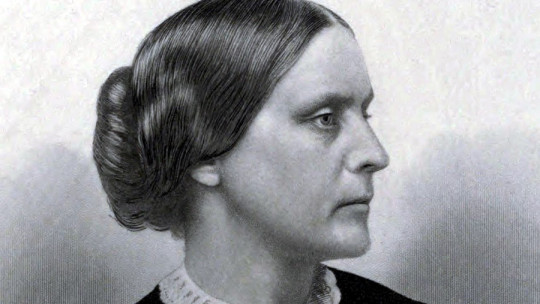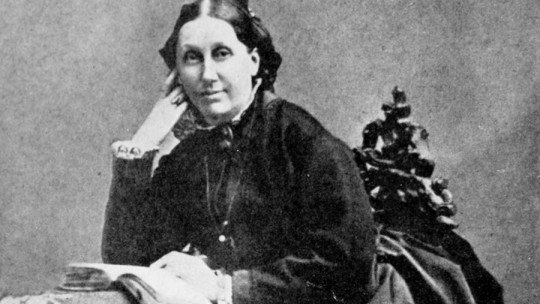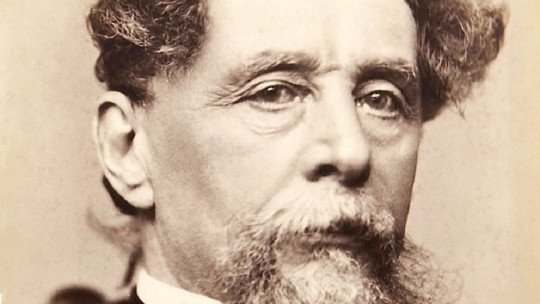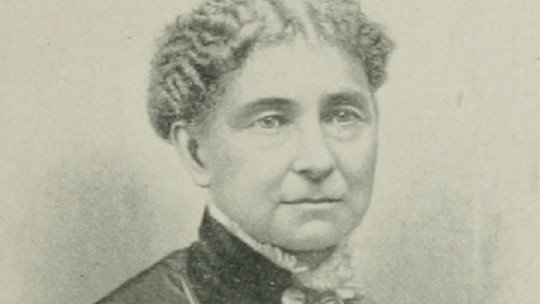
In 1851, Amelia Bloomer, journalist and editor of one of the first women’s publications in the United States, was walking through the town of Seneca Falls, in the state of New York, dressed in curious pants. She was not alone; Parading next to her were her fellow fighters: Elizabeth Cady Stanton (1815-1902) and Elizabeth Smith Miller (1822-1911). Of course, the attire of such respectable ladies caused astonishment among passersby.
Amelia Jenks Bloomer was part of the feminist movement that spread like a new wind through the young American states A woman of indomitable spirit, she was a tireless journalist, from whose pen emerged some of the most fervent pleas in favor of women’s rights. Let’s take a closer look at the life of this extraordinary woman.
Brief biography of Amelia Bloomer, one of the first women to wear pants
Amelia Jenks Bloomer She has gone down in history for being the inventor of the famous bloomer pants although in truth it was not she who designed them, nor was she the one who wore them for the first time.
She herself expressed her surprise when, days after the scandalous walk through Seneca Falls, she observed that people were beginning to know these pants by her name.
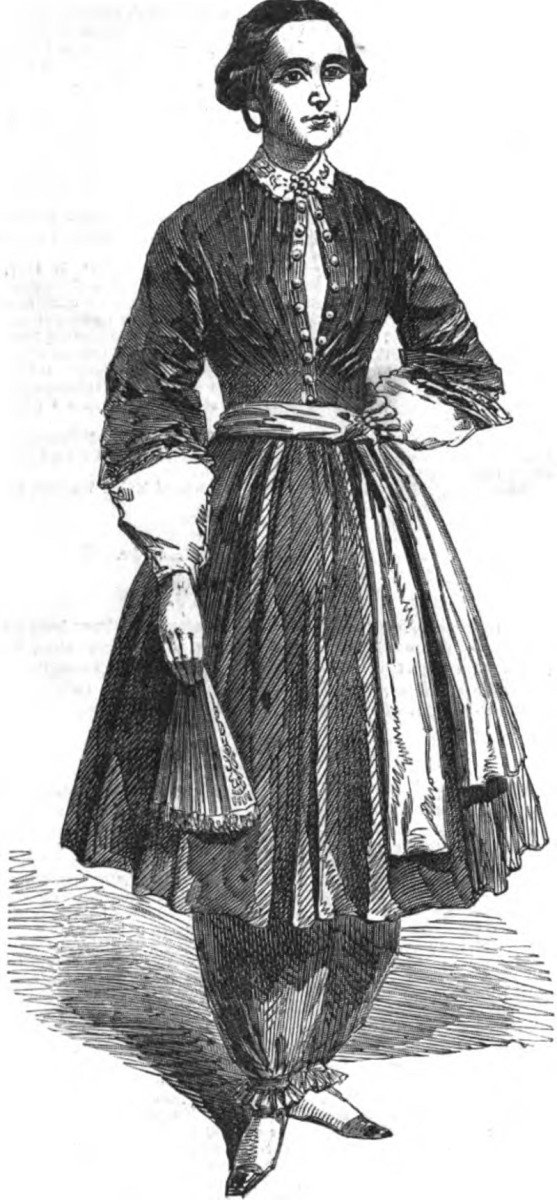
In reality, they were an original design by one of her fellow feminists, Elizabeth Smith Miller, one of the staunchest fighters for women’s rights.
Extravagant women’s fashion
At the beginning of the 19th century, A movement appears in the United States that sought to establish a new model of dress for women The idea connected with the values of a “rational dress” that adapted to the body and allowed women to carry out their daily activities with complete freedom and, above all, with minimum health guarantees.
And, around 1830, eccentricity in women’s attire became fashionable again. This eccentricity involved an exaggerated bulging of the skirts, under which several layers of petticoats were placed to give them a bell shape. Obviously, the woman had a very difficult time walking under all those kilos of fabric and, in addition, there was the issue of the corset. While it is true that, throughout the 19th century, this piece became increasingly “ergonomic” (we can find photographs from the last decades of the 19th century where women appear playing tennis and hiking with a corset squeezing their bust). ), the truth is that it was still an unnatural garment, which constricted the ribs, stomach and lungs.
There were many doctors who warned about the harm that the corset had on the female body Some even claimed that it moved the organs around and, although this topic is debated even today, the reality is that a very tight corset made breathing significantly difficult, as well as healthy and normal digestion. However, it was of no use for the doctors to inform the ladies about the matter; Fashion had prevailed, and what was in vogue was a waist that was narrower, the better.
Religious movements and women’s freedoms
The “rational dress” movement was very connected to the religious reality of the United States. Communities such as the Quakers claimed the equal role of men and women in God’s creation, since both sexes worked side by side on farms and in caring for the family. And if the woman worked alongside the man, it was unthinkable that she would do so in such a prison.
It is not surprising, then, that many of the first activists for women’s rights belonged to these religious communities. Lucretia Mott (1793-1880), one of the greatest advocates of women and women’s rights, was a Quaker, and Amelia herself belonged to the Presbyterian church. In addition to advocating for greater freedom for women, it was very common for these women to also be abolitionists and to belong to the well-known Temperance Movement, which urged people to overcome the temptation to consume alcoholic substances.
The basis of all these movements was the faith in the creation of a much “purer” society, that is, more connected to God and the real freedoms that he granted to human beings. An ideology absolutely contrary to the capitalist society that was beginning to develop in the West, where women had a strictly secondary role. Indeed; Empowered by Victorian morality, the bourgeois man had acquired the active role, while the woman was relegated to the home dressed appropriately as the most beautiful object in the house.
This concept of “ornamentary woman” was what these feminists were against. Her ideal was not an elegantly dressed woman who did not move, but a strong, brave and hard-working woman, who could with her hands carve out her own future alongside her partner.
Amelia Jenks becomes Amelia Bloomer
Awake, intelligent, good-hearted and with little sense of humor. This is how her future husband, lawyer Dexter Bloomer, whom she married in 1840, affectionately describes her. The marriage had been the fruit of love, and the truth is that both spouses respect and support each other. It is precisely thanks to the push of Dexter (who has realized the extraordinary capacity that his wife has) that Amelia begins to write articles, at first, quite committed to the Temperance Movement, of which she was a fervent (and almost radical ) follower.
Amelia’s fine intelligence and literary gifts guide her pen. Actually, his education had been poor and scarce; Born in May 1818 in a modest town in New York State, she barely attended school When she was seventeen years old she was sent to a home to act as the children’s governess, and it is precisely there, in the city of Waterloo, where she meets Dexter, then a young law student.
Dexter is, in addition to being a future lawyer, the owner of a publication, the Seneca County Courier, whose circulation is successfully sold in Seneca Falls, the town where the newlyweds settle. The newspaper specializes in local political news, but soon Amelia makes the articles she signs her own and begins to vindicate her own ideas.
These ideas gained a definitive boost in 1848, when the first convention for women’s rights was convened in Seneca Falls. The main promoter of the event is Lucretia Mott, a well-known Quaker preacher who had traveled to London to attend an abolitionist convention and who had been stunned when she was not allowed to enter due to her condition as a woman. Mott then realized that, in addition to the fight to eliminate slavery, it was strictly necessary to vindicate women’s rights
The Seneca Falls convention of 1848 greatly impressed Amelia, to the point that, the following year, she founded and began to take charge of The Lily, the first publication aimed exclusively at women. It is from the pages of The Lily that Amelia strongly supports the cause of Mott and her other colleagues, writing articles where she defends equality between men and women and the right of women to vote and own property. And when she was rebuked for her “radicality,” she replied that God had created Eve and Adam as equals, and that, therefore, there was no reason to believe that women should be subservient to men.
Bloomers and the clothing revolution
It was precisely in The Lily where the first images of the bloomers appeared, those pants that the three aforementioned women wore on their walk through Seneca Falls, under the astonished gaze of everyone. To tell the truth, more than pants they were a kind of very wide bloomers, over which a very short skirt was placed. The idea was, of course, that women could have the same freedom of movement as men
We have already mentioned that the idea of bloomers had been Smith Miller’s work, but the truth is that they became popular with the last name of our protagonist, perhaps due to the publicity he gave them from his newspaper. In fact, Amelia was the last woman to wear them (Cady Stanton and Smith Miller had done so long before), but she was, paradoxically, the one who wore them the longest. Her other two companions realized that the scandal caused by her walks with bloomers kept people away from what really mattered, which was women’s suffrage and other inalienable rights. The wardrobe was, according to them, something secondary, so they soon hung the bloomers in the closet and returned to the skirt and corset.
Amelia herself ended up giving up. In the 1850s, the crinoline appeared, a hollow device made of wire and horsehair that allowed the skirt to be fluffed in the same way as petticoats but, at the same time, gave the woman’s legs greater movement, given that it weighed a lot. less. Amelia considered that this invention was enough to guarantee female physical freedom… and she stopped wearing bloomers.
Amelia’s last years and the birth of “bloomermania”
At the end of the century, Amelia was with her husband in Iowa, where she had moved to live in peace after the bloomers scandal. However, despite having returned to the skirt, Amelia continued her advocacy work, always in favor of women’s rights.
In 1891 she suffered severe facial paralysis that left her speechless. She gradually recovered and, constant and tireless as she was, she continued to engage in her advocacy activities. But the end of it was near her. Her husband tells us in his biography that he wrote about her that, on the afternoon of December 28, 1894, Amelia began to feel very ill and collapsed on her. Her agony lasted two days, and she finally died on the 30th of that same month.
More or less the same year as Amelia’s death, bloomers returned to women’s fashion The reason? They were ideal for riding a bicycle. The baggy pants invented by Smith Miller and popularized by Bloomer began to become all the rage among young girls in the Belle Époque. It was the first episode of a revolution that would no longer be stopped. Less than a century after Amelia and her companions wore the first pants, the garment was already completely normalized among the female public, and now, in truth, we could not imagine life without it.

